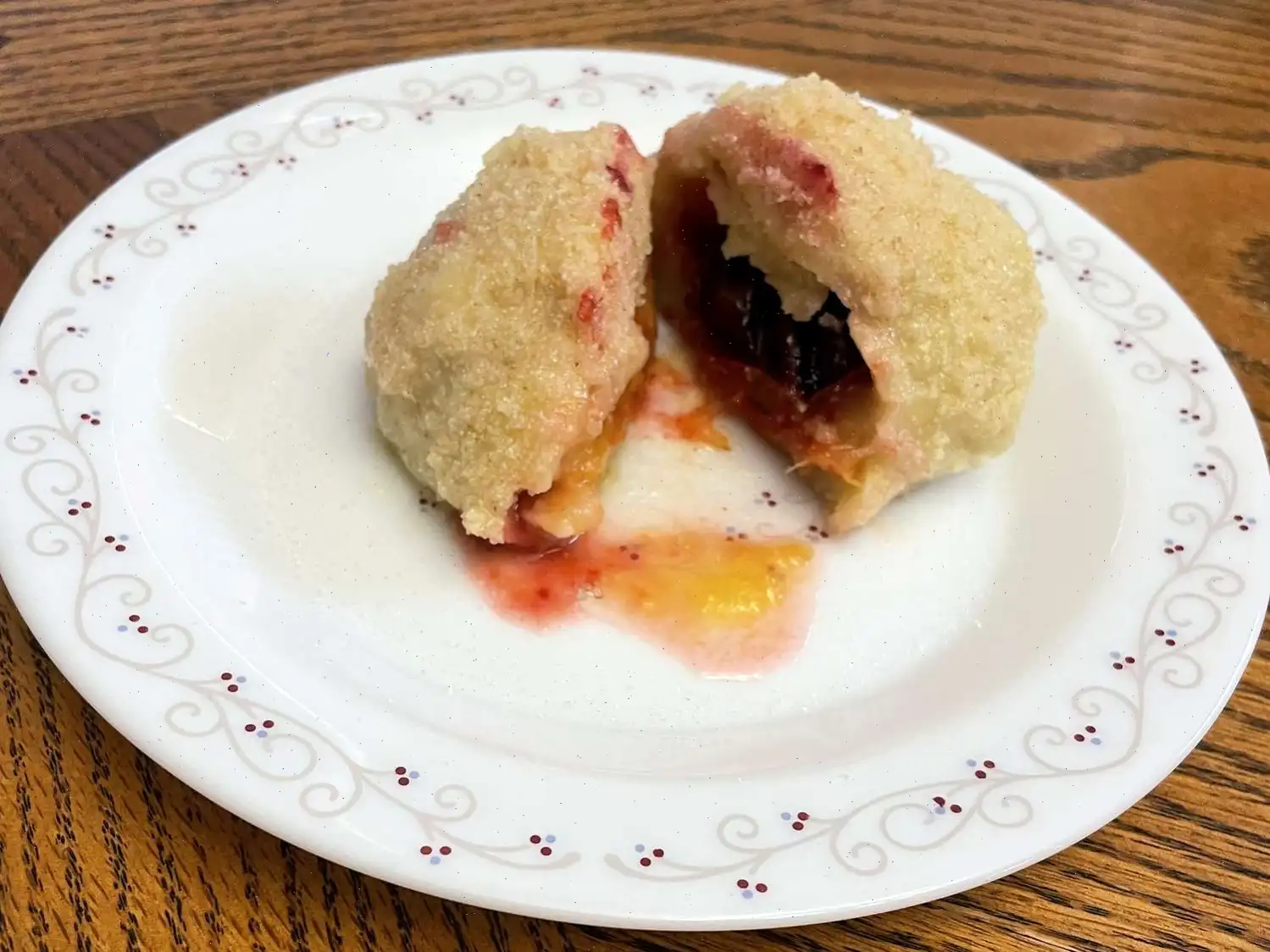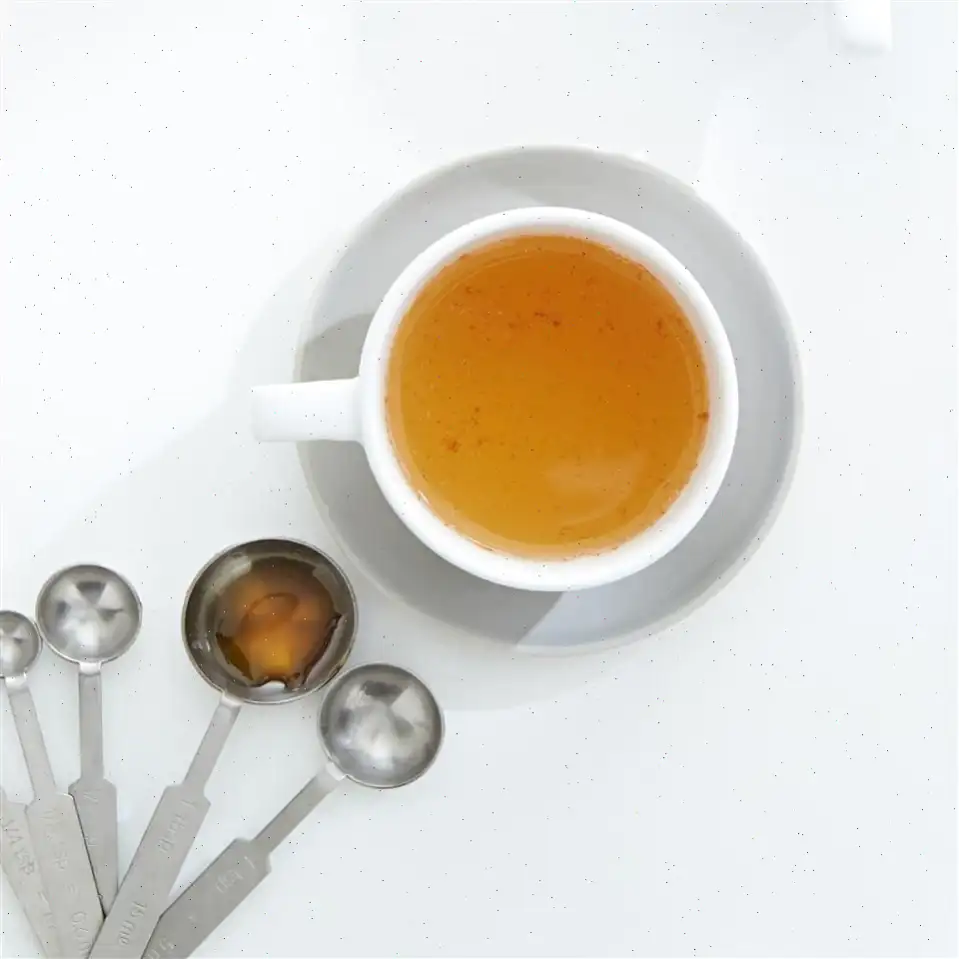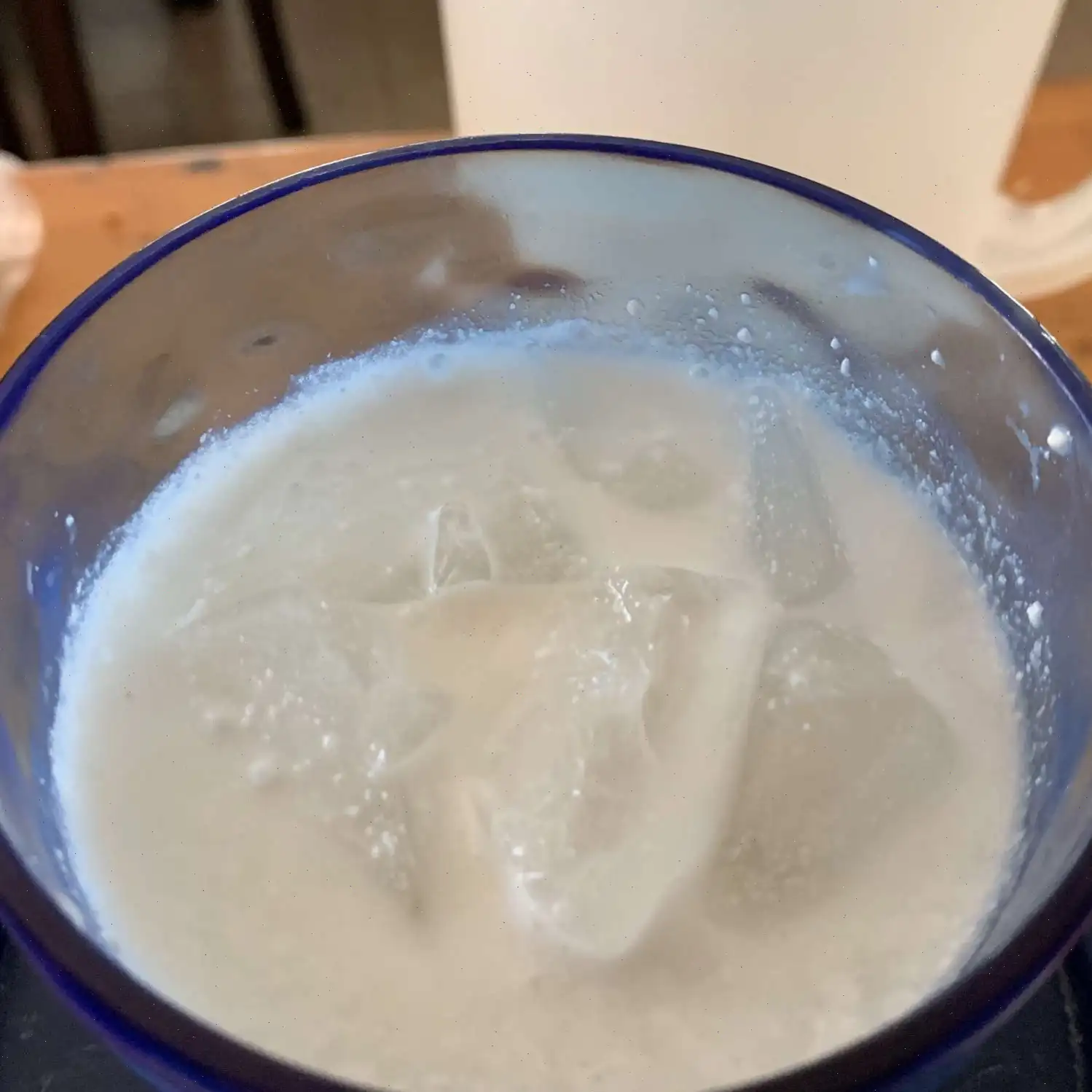
Potato Plum Dumplings Recipe
Plum Dumplings Recipe
Ingredients
- 4 large russet potatoes
- teaspoon salt
- 1 tablespoon butter, softened
- 2 eggs, beaten
- cup farina
- 1 cup all-purpose flour, or as needed
- 12 Italian prune plums
- 12 cubes white sugar
- cup butter, melted
- cup white sugar
- 1 cup dry bread crumbs
- Additional melted butter and sugar for garnish (optional)
Directions
Step 1: Scrub the potatoes thoroughly and place them in a large pot with enough water to cover them. Bring the water to a boil and cook the potatoes until tender, about 40 minutes. Drain the potatoes and allow them to cool. Once they are cool enough to handle, peel them and press them through a ricer into a large bowl. Set aside to cool completely. You can prepare this part of the recipe up to one day in advance.
Step 2: In a large bowl, combine the prepared potatoes, salt, beaten eggs, and softened butter. Stir well to combine. Gradually add in the farina and flour, mixing until the dough comes together. If the dough is still too wet, add more flour until it reaches a smooth consistency. Turn the dough out onto a floured surface and knead for 5-10 minutes until it becomes smooth and elastic.
Step 3: Split each plum where it naturally cracks and remove the pit. Replace each pit with a sugar cube, then close the plum. Set aside.
Step 4: Roll out the dough on a floured surface to about inch thickness. Cut the dough into twelve 3-inch squares. Place one plum in the center of each square and bring the corners up around the plum. Pinch the seams tightly to seal the dumplings.
Step 5: Bring a large pot of water to a gentle boil. Carefully add about 4 dumplings at a time to the pot. Once the dumplings float to the surface, continue to cook for an additional 5 minutes. Transfer the cooked dumplings to a covered bowl to keep warm.
Step 6: In a small skillet, melt the remaining cup of butter over medium heat. Stir in the bread crumbs and cup of sugar. Continue to cook, stirring occasionally, until the breadcrumbs are golden brown and crispy. Remove the mixture from the skillet and transfer it to a plate.
Step 7: Roll the warm dumplings in the breadcrumb mixture until they are fully coated. To serve, place one or two dumplings on a plate, sprinkle with a little extra sugar, and drizzle with additional melted butter, if desired. Serve warm and enjoy!
Nutrition Facts (per serving)
- Calories: 326
- Total Fat: 10g (13% Daily Value)
- Saturated Fat: 6g (30% Daily Value)
- Cholesterol: 54mg (18% Daily Value)
- Sodium: 244mg (11% Daily Value)
- Total Carbohydrate: 53g (19% Daily Value)
- Dietary Fiber: 4g (16% Daily Value)
- Total Sugars: 15g
- Protein: 7g (14% Daily Value)
- Vitamin C: 31mg (34% Daily Value)
- Calcium: 44mg (3% Daily Value)
- Iron: 2mg (12% Daily Value)
- Potassium: 668mg (14% Daily Value)
Note: Percent Daily Values are based on a 2,000-calorie diet. Your daily values may be higher or lower depending on your individual calorie needs. Always consult with a medical professional if you have dietary restrictions.

History of Potato Plum Dumplings
Potato plum dumplings, known as "Zwetschgenkndel" in German, are a classic dish with roots in Central and Eastern Europe. Their origin is particularly tied to Austria, Hungary, and Germany, where they have been enjoyed for generations. The dish is often associated with late summer and early fall when plums are in season. These dumplings are traditionally prepared as a sweet dish, offering a delicious balance between the savory and sweet with the rich flavors of potatoes and the tartness of plums. Historically, these dumplings were a way to preserve plums, turning them into a hearty, satisfying meal for families, especially during harvest times.
Regional Features
While potato plum dumplings are commonly found in Austria and Germany, the recipe has spread throughout various regions of Central and Eastern Europe, with each country adding its own unique touch. In Austria, the dish is typically served with a sweet breadcrumb coating, while in Hungary, it is known as "Gombc," and in the Czech Republic, a similar version exists with different variations in fillings and toppings. The use of farina or breadcrumbs varies depending on the region. Additionally, some regions prefer using apricots in place of plums, known as Marillenkndel, which is just as popular in parts of Austria and Southern Germany.
Differences from Similar Dishes
Potato plum dumplings are often compared to other types of dumplings like the savory potato dumplings from Germany (Kartoffelkndel) or the fruit-filled dumplings of Poland. However, the key difference lies in the filling and the sweet treatment. Unlike savory dumplings that may be served as a side dish to meats, potato plum dumplings are sweet and dessert-oriented. The plums used in the recipe give the dish a distinctive tartness, contrasting with the sweetness of the sugar cubes placed inside. Additionally, the breadcrumb coating is often lightly sugared and browned in butter, giving it a rich, comforting finish.
Where to Serve
Potato plum dumplings are a beloved dessert in many Central and Eastern European households, particularly in Austria, Hungary, and Germany. They are often served as a festive dish during harvest seasons or as a hearty dessert after a family meal. In Austria, it is common to serve them with a dusting of powdered sugar and perhaps a dollop of sour cream or whipped cream for extra indulgence. These dumplings can also be found in specialty restaurants that focus on traditional Austrian or Hungarian cuisine. They are often featured on the menus of autumn festivals, especially when plums are in season. In some regions, it is also common to freeze a batch for later consumption, as they freeze well and can be easily reheated.
Interesting Facts
- The dumplings can be made in advance and stored in the freezer, making them a convenient dish to prepare for gatherings or celebrations.
- In some versions of the dish, apricots are substituted for plums. This variation is especially popular in regions where apricots grow abundantly.
- Potato dumplings in general are a staple of Eastern European cuisine, with different variations appearing in Czech, Slovak, and Polish kitchens, often served as a side to meats or in sweet forms like the potato plum dumplings.
- In Austria, potato plum dumplings are considered a "comfort food" that evokes fond memories of family meals and traditions passed down through generations.
- One traditional variation of the recipe involves frying the dumplings in butter after boiling, giving them a crispy exterior while keeping the soft, fruity center.
FAQ about Potato Plum Dumplings Recipe
Comments
Debra Hill
08/09/2023 03:05:31 PM
Growing up with my German mother's homemade plum dumplings, I was delighted to stumble upon this recipe. Although I couldn't find her original recipe, I decided to give this one a try. To my delight, my family absolutely loved them - just like the ones mom used to make. We opted to skip the sugar cubes in the plums to retain a slightly tart flavor. I did find that I needed to add more flour to the dough to eliminate its tackiness, using about 3 to 4 cups in total. Unlike the traditional breadcrumb topping, we prefer to drizzle melted butter and sprinkle powdered sugar on top of our dumplings. Thank you for sharing this wonderful recipe!
Joyce Mitchell
10/22/2024 01:22:04 PM
I was pleasantly surprised to come across this recipe. My Austrian mother-in-law used to make these for us. Along with the sweet version, she also prepared a meat variety with mincemeat, served on a bed of sauerkraut. I'd like to add to the previous poster's note that my mother used to toast the knoedel in the oven at a low temperature for about 15 minutes after rolling them in the crumbs. I believe it helped the crumbs to stick better. Thank you for sharing the recipe and bringing back memories of the love that went into making these dishes.
Brenda Moore
09/30/2022 08:28:10 AM
My Austrian grandmother-in-law used to make these and we never thought we'd have them again. But when I discovered this recipe and tried making them myself, everyone agreed they tasted just like the ones we remembered. We absolutely loved them, especially when made with apricots. I also replaced the sugar cube with 1/2 tsp of sugar.
Kelly Martin
05/13/2023 05:03:14 PM
My mother used to prepare potato-plum dumplings and bake them in the oven along with pork roast. Oh!! Absolutely delicious!!!!
Nicholas Mitchell
11/10/2023 05:41:31 AM
My grandmother, aunt, and mother were all skilled at making these prune treats. It was a laborious task, especially for my mother who always prepared a large batch. As the last family member holding the cherished recipe, she eventually stopped making them as she grew older. Recently, I stumbled upon her old recipe book, but the instructions were a bit unclear. While these treats were delicious, our family's version was even better. We suspect that our secret ingredient of sweetened prunes, boiled to perfection, created a unique prune filling rather than a traditional cooked plum taste. I am eager to experiment with plums to recreate the recipe. By the way, in our family, we affectionately named these treats "Jewish cannon balls." Despite being delightful, they always left a lasting impression in your belly. I encourage everyone to try making them and enjoy the delightful flavors.
Betty Allen
04/02/2024 06:03:05 PM
I found the dough to be very sticky and ended up adding almost 2 extra cups of flour before I could roll it out. Next time, I suggest adding the flour gradually to avoid this issue. The breadcrumbs didn't stick well because my dumplings were cold by the time we ate them. Does anyone have suggestions for a garnish? Thanks, Dan.
Brandon Flores
08/19/2022 04:51:45 AM
Absolutely incredible! This recipe brought back memories of my grandmother's cooking. The taste is spot on, just like hers! We enjoyed them with a dollop of sour cream and a sprinkle of sugar. Simply delicious.








